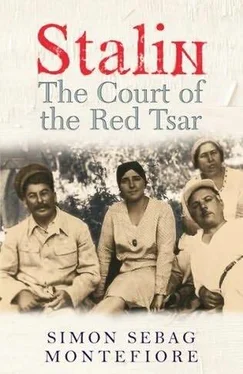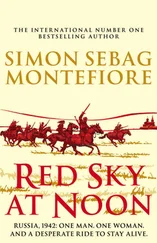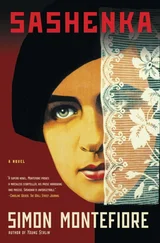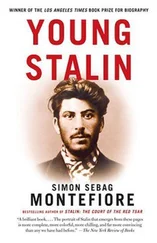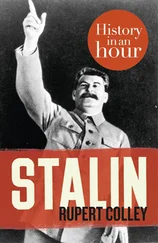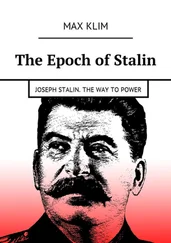Yet Stalin needed the cult and secretly fostered it. With his trusted chef de cabinet , he could be honest. Two notes buried in Poskrebyshev’s files are especially revealing: when a collective farm asked the right to name itself after Stalin, he gave Poskrebyshev blanket authority to name anything after himself: “I’m not opposed to their wish to ‘be granted the name of Stalin’ or to the others… I’m giving you the right to answer such proposals with agreement [underlined] in my name.” 12One admirer wrote to say, “I’ve decided to change my name to Lenin’s best pupil, Stalin” and asked the titan’s permission.
“I’m not opposed,” replied Stalin. “I even agree. I’d be happy because this circumstance would give me the chance to have a younger brother. (I have no brother.) Stalin.” 13Just after the film prize–giving, death again touched the Politburo.
14. THE DWARF RISES; CASANOVA FALLS
On 25 January 1935, Valerian Kuibyshev, who was forty-seven, died unexpectedly of heart disease and alcoholism, just eight weeks after his friend Kirov. Since he had questioned the NKVD investigation and allied himself with Kirov and Sergo, it has been claimed that he was murdered by his doctors, an impression not necessarily confirmed by his inclusion in the list of those supposedly poisoned by Yagoda. We are now entering a phase of such devious criminality and shameless gangsterism that all deaths of prominent people are suspect. But not every death cited as “murder” in Stalin’s show trials was indeed foul play: one has to conclude there were some natural deaths in the 1930s. Kuibyshev’s son Vladimir believed his father was killed but this heroic drinker had been ill for a while. The magnates lived such an unhealthy existence that it is amazing so many survived to old age. 1
Nonetheless it was well-timed for Stalin who took the opportunity on 1 February [81] Mikoyan and Chubar, a senior official in Ukraine, as the two senior candidate members of the Politburo, were made full members, with Zhdanov and Eikhe, boss of West Siberia, taking their place as candidates.
to promote two younger stars who were the very spirit of the age. As Kaganovich took over the colossal job of running the railways, he handed over Moscow to Nikita Khrushchev, the semi-literate worker who would one day succeed Stalin. 2
Kaganovich met Khrushchev during the February 1917 Revolution in the Ukrainian mining town of Yuzovka. Despite a flirtation with Trotskyism, Khrushchev’s patrons were unbeatable: “Kaganovich liked me very much,” he recalled. So did both Nadya (“my lottery ticket,” said Khrushchev) and Stalin himself. Resembling a cannonball more than a whirlwind, Khrushchev’s bright porcine eyes, chunky physique and toothy smile with its golden teeth exuded primitive coarseness and Promethean energy but camouflaged his cunning. As the capital’s First Secretary, he drove the transformation of “Stalinist-Moscow”: his creation of the Metro, aggressive building programme and vandalistic destruction of old churches won him a place in the élite. Already a regular at Kuntsevo, this pitiless, ambitious believer regarded himself as Stalin’s “son.” Born in 1894, son of a peasant miner, this meteoric bumpkin became Stalin’s “pet.” 3
It was Kaganovich’s other protégé who suddenly emerged as the coming man. Yezhov was already the overlord of the Kirov case. Now he was promoted to Kirov’s place as CC Secretary, and on 31 March was officially designated to supervise the NKVD. 4Soon to be notorious as one of history’s monsters, “the bloody dwarf,” and a ghost whom no one remembered even knowing, Yezhov was actually liked by virtually everyone he met at this time. He was a “responsive, humane, gentle, tactful man” who tried to help with any “unpleasant personal matter,” remembered his colleagues. Women in particular liked him. His face was almost “beautiful,” recalled one lady, his grin wide, his eyes a bright clever green-blue, his hair thick and black. He was flirtatious and playful, “modest and agreeable.” Not only was he an energetic workaholic; this “small slender man, always dressed in a crumpled cheap suit and a blue satin shirt” charmed people, chattering away in his Leningrad accent. He was shy at first but could be fun, exuberant with a keen sense of humour. He suffered from a slight limp but he had a fine baritone, played the guitar and danced the gopak . However, he was skinny and tiny: in a government of small men, he was almost a pygmy, 151 centimetres tall. 5
Born in 1895 to a forest warden, who ran a tearoom-cum-brothel, and a maid, in a small Lithuanian town, Yezhov, like Kaganovich and Voroshilov, only passed a few years at primary school before going to work in Petersburg’s Putilov Works. No intellectual, he was another obsessive autodidact, nicknamed “Kolya the book lover”—but he possessed the Bolshevik managerial virtues: drive, hardness, organizational talent and an excellent memory, that bureaucratic asset described by Stalin as a “sign of high intelligence.” Too short to serve in the Tsarist Army, he mended guns, joining the Red Army in 1919: in Vitebsk, he met Kaganovich, his patron. By 1921, he was working in the Tartar Republic where he aroused hatred by showing his contempt for the local culture and fell ill, the first of many signs of his fragility. He would now have met Stalin. In June 1925, he rose to be one of the Secretaries of Kirgizia. After studying at the Communist Academy, he was promoted to work at the CC, then to Deputy Agriculture Commissar. In November 1930, Stalin received him in his office. At Kaganovich’s suggestion, Yezhov began to attend the Politburo. In the early thirties, he headed the CC Personnel Assignments Department and helped Kaganovich purge the Party in 1933, flourishing in a frenzy of exhausting bureaucratic dynamism. Yet already there were signs of danger and complexity. 6
“I don’t know a more ideal worker,” observed a colleague. “After entrusting him with a job, you can leave him without checking and be sure he would do it,” but there was one problem: “He does not know how to stop.” This was an admirable and deadly characteristic in a Bolshevik during the Terror but it also extended to Yezhov’s personal life.
His humour was oafishly puerile: he presided over competitions to see which trouserless Commissar could fart away handfuls of cigarette ash. He cavorted at orgies with prostitutes, but was also an enthusiastic bisexual, having enjoyed avid encounters with his fellow tailoring apprentices, soldiers at the front and even high Bolsheviks like Filipp Goloshchekin, who had arranged the murder of the Romanovs. His only hobby apart from partying and fornicating was collecting and making model yachts. Unstable, sexually confused and highly strung, he was too weak to compete with bulldozers like Kaganovich, not to mention Stalin himself. Yezhov suffered constant nervous illnesses, including sores and itchy skin, TB, angina, sciatica, psoriasis (a nervous condition he probably shared with Stalin) and what they called “neurasthenia.” He often sank into gloomy depression, drank too much and had to be nurtured by Stalin, just to keep him at work. 7
Stalin embraced him into his circle: Yezhov had exhausted himself so Stalin insisted on more rest cures. “Yezhov himself is against this but they say he needs it,” he wrote in September 1931. “Let’s prolong his holiday and let him sit in Abastuman for two more months.” 8Stalin gave nicknames to his favourites: he called Yezhov “my blackberry” (yezhevika). Stalin’s notes were often curt personal questions: “To Comrade Yezhov. Give him some work,” or “Listen and help.” 9Yet he instinctively understood the essence of Yezhov: there is an unpublished note from August 1935 to his lieutenant in the archive that sums up their relationship. “When you say something,” Stalin wrote, “you always do it!” There was the heart of their partnership. 10When Vera Trail, whose memoir of her encounter remains unpublished, met him at his peak, she noticed Yezhov was so perceptive of the wishes of others that he could literally “finish one’s sentences.” Yezhov was uneducated, but also sly, able, perceptive and without moral boundaries. 11
Читать дальше
